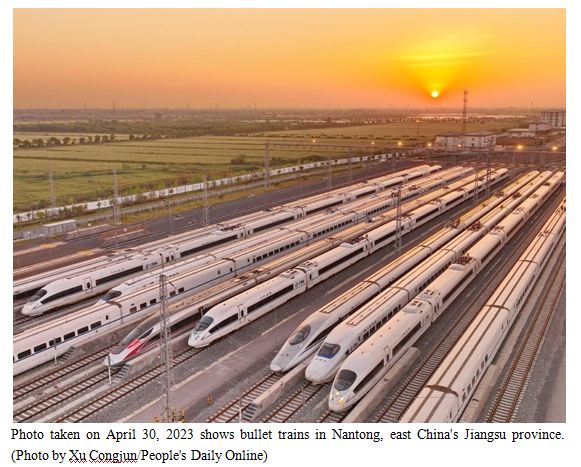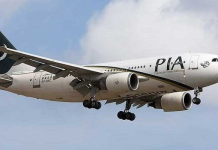By Li Xinping, Han Xin, People’s Daily
“Traveling” became a buzzword during the just-concluded May Day holiday. According to statistics released by the Ministry of Transport, Chinese people made over 270 million trips nationwide via railways, highways, waterways and civil aviation during the five-day holiday, with a daily average of over 54 million trips, an increase of 162.9 percent over the same period last year.
The significant rise mirrored the vitality of the Chinese economy and the remarkable capability of China’s transport network.
“The train leaves Zhengzhou in the morning and arrives in Chongqing at noon,” said Liu Chen, who was taking a family trip from Zhengzhou, capital of central China’s Henan province to southwest China’s Chongqing municipality by the G3421 train on May 2.
The high-speed railway from Zhengzhou to Chongqing was put into use on June 20 last year. It takes only some four hours to complete the entire trip between the two cities, about 13 hours faster than normal-speed trains.
A number of new lines, train stations and airports started operation before this May Day holiday. The comprehensive multidimensional transport network has made travel even more convenient.
Soon after a plane landed at the Taxkorgan Khunjerab Airport in northwest China’s Xinjiang Uygur autonomous region, passengers filed out of the plane and started snapping photos.
In the past, it took nearly eight hours to go to Tashkurgan from Urumqi, capital of Xinjiang. Since a flight was launched by China Southern Airlines at the end of 2022, the trip has been shortened by 3/4.
During the May Day holiday, cruise ships along the Yangtze River received an enormous number of tourists. Ninety-five percent of them were occupied.
“Cruise ships of the Sinotrans Changhang Group are expected to receive 60,000 passengers along the Yangtze River during the holiday, a new record in history,” said Yuan Baofeng, head of the market operation department of the company.
Road trips were also popular. Gu Yue, a tourist from east China’s Anhui province, was quite excited about his trip. During the trip, Gu drove all the way east for two hours along the Shanghai-Chongqing Expressway and then got off the expressway and onto rural roads, enjoying the beauty of mountains and countryside along the way.
“I didn’t expect that there would be charging stations for electric cars along rural roads,” he told People’s Daily, adding that this has made the trip more convenient.
China has made steady progress in the construction of transport infrastructure over recent years. Both the size and coverage of the country’s multidimensional transport network have been on a constant rise.
As of the end of 2022, the network had grown to cover a total mileage of more than 6 million kilometers, with 128,000 kilometers of inland waterways, and the number of certified civil airports reached 254. Nearly all qualified townships and administrative villages are connected to hardened roads and bus services.
China today is home to the world’s largest high-speed railway network and expressway network, as well as world-class port clusters.
Technologies have also made transport more efficient and intelligent.
For instance, passengers can complete security checks, customs clearance and boarding procedures by “face scanning” with their ID cards, and they can also track their checked luggage in real time on mobile applications.
“All I need is an ID card. Tracking the luggage is as easy as tracking express delivery parcels. The intelligent airport is awesome,” said Wang Xiao, a passenger flying from the Beijing Daxing International Airport to Kunming, southwest China’s Yunnan province.
The Beijing Daxing International Airport saw a daily average of 120,000 passenger trips during the May Day holiday, 30,000 more than those in the Spring Festival travel rush this year, said Li Ziwei, a manager with the airport.
According to Li, despite a surge in the number of passenger trips, no serious delays or long passenger queues were observed at the airport thanks to its intelligent operating system.
During the May Day holiday, over 11,000 trains were riding and 16,000 flights were flying across the nation on a daily basis. Besides, more than 50 million passenger vehicles were running on roads every day. This demonstrated the country’s strong capability of transportation coordination.
In the dispatching center of China Railway Shanghai Group, a big screen was showing the passenger flow of more than 740 train stations and the operational status of trains on over 13,000 kilometers of railways nationwide.
Bian Guiqing, chief on duty of the dispatching center, told People’s Daily that 168 temporary passenger trains were added to meet tourists’ demand. According to Bian, it took as short as two hours to open a new temporary line since obtaining the demand of tourists.



















